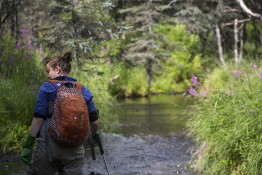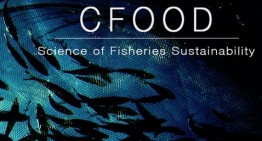Sarah Schooler spent her summer in the Alaskan bush, collecting data on salmon and the habits of hungry grizzly bears with the School of Aquatic and Fishery Sciences.
Read more at the UW homepage. »Bubble plumes off Washington, Oregon suggest warmer ocean releases frozen methane
Warming ocean temperatures a third of a mile below the surface, in a dark ocean in areas with little marine life, might attract scant attention. But this is precisely the depth where frozen pockets of methane ‘ice’ transition from a dormant solid to a powerful greenhouse gas. New University of Washington research, whose lead author is UW professor of oceanography H.
Read more at UW Today »New fact-check on fisheries reporting takes to Web, social media
An international team of experts in fisheries management, spearheaded by UW professor Ray Hilborn from the School of Aquatic and Fishery Sciences, is trying to lead the conversation about sustainable fisheries using a less traditional approach—reaching the general public directly through a new website and social media outreach. The initiative is called the Collaborative for Food from Our Oceans Data, or “CFOOD” for short, and offers data and commentary on the sustainability of global fisheries.
Read more at UW Today »Natural Hazards and Resilient Communities Lecture Recap: UW's David Montgomery
On Tuesday, October 13, the Department of Earth and Space Sciences‘ David Montgomery presented on disasters fast and slow as part of the Surviving Disasters: Natural Hazards & Resilient Communities speaker series. Co-sponsored by the College of the Environment, UW Alumni Association, and UW Graduate School, Montgomery highlighted the types of mega-hazards that leave entire communities in shambles and garner attention around the globe.
Read more »New study uses high-speed search methods to better estimate climate threats to biodiversity
Climate change is perhaps felt most acutely in the Arctic right now, but by the start of the next century, animal species in the Amazon basin region will be harder hit as the Earth warms. In a study published this week in the journal PLOS ONE, researchers have used new high-performance computing methods and comprehensive data on the distribution of thousands of species to map the threat that climate change poses to birds, mammals and amphibians across the Western Hemisphere.
Read more at UW Today »





